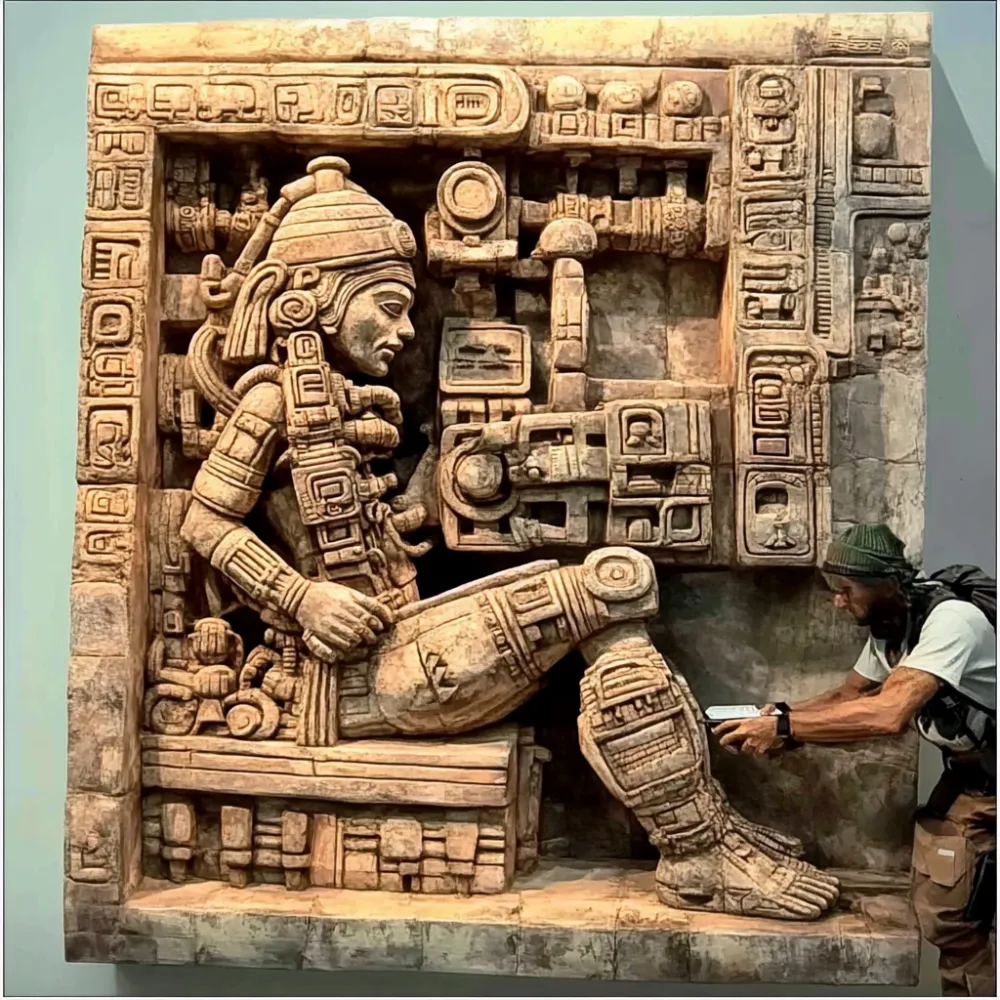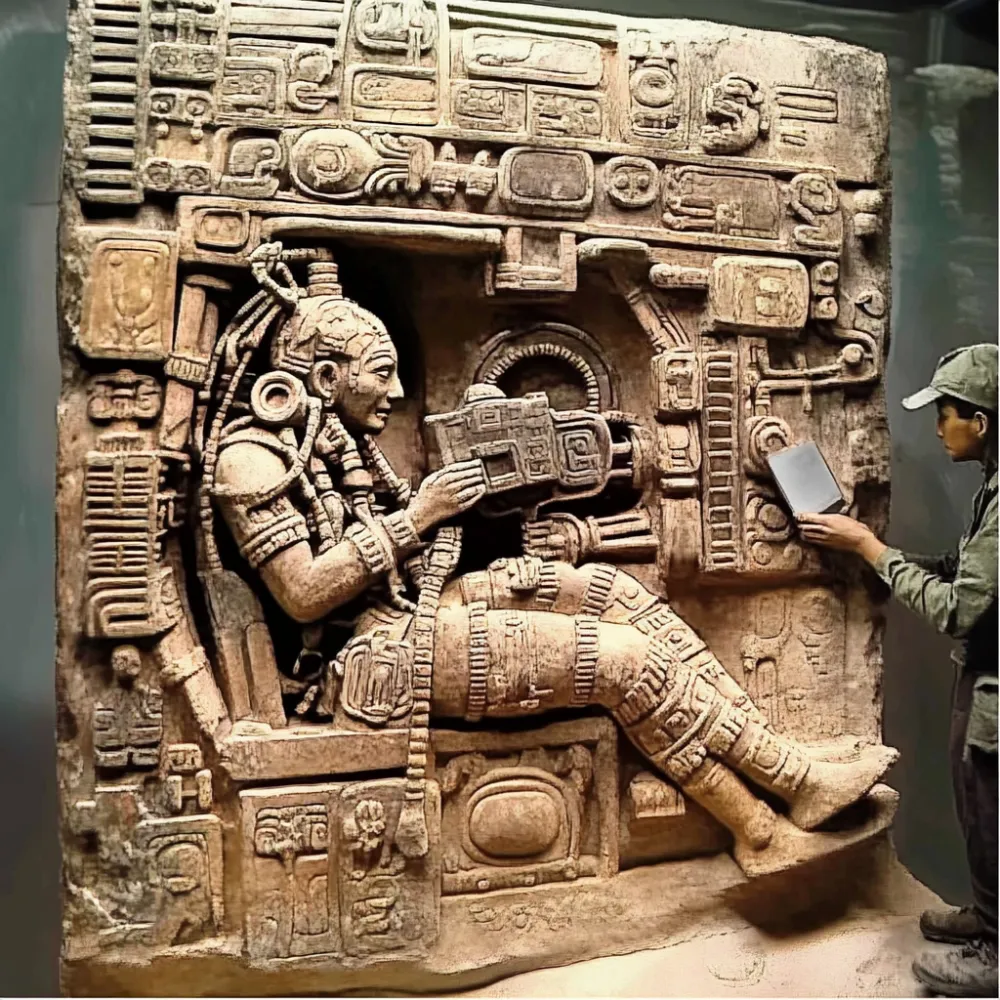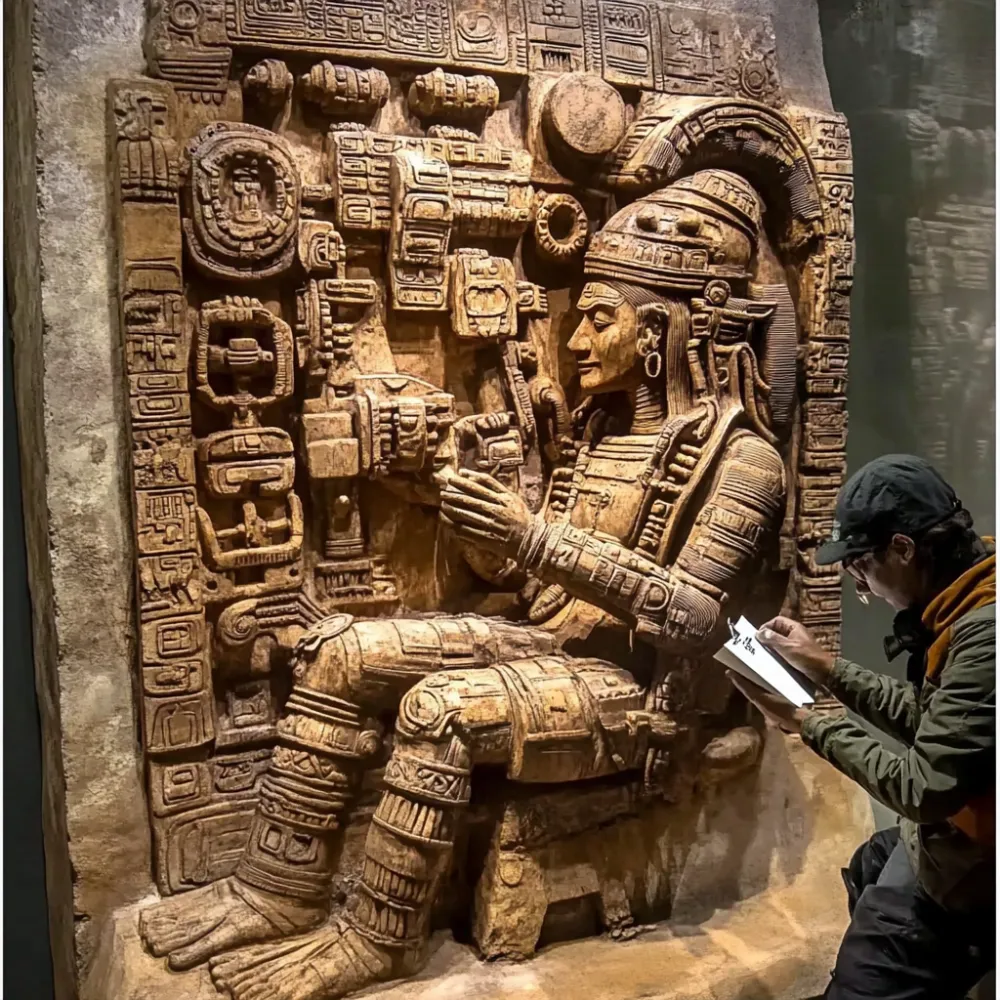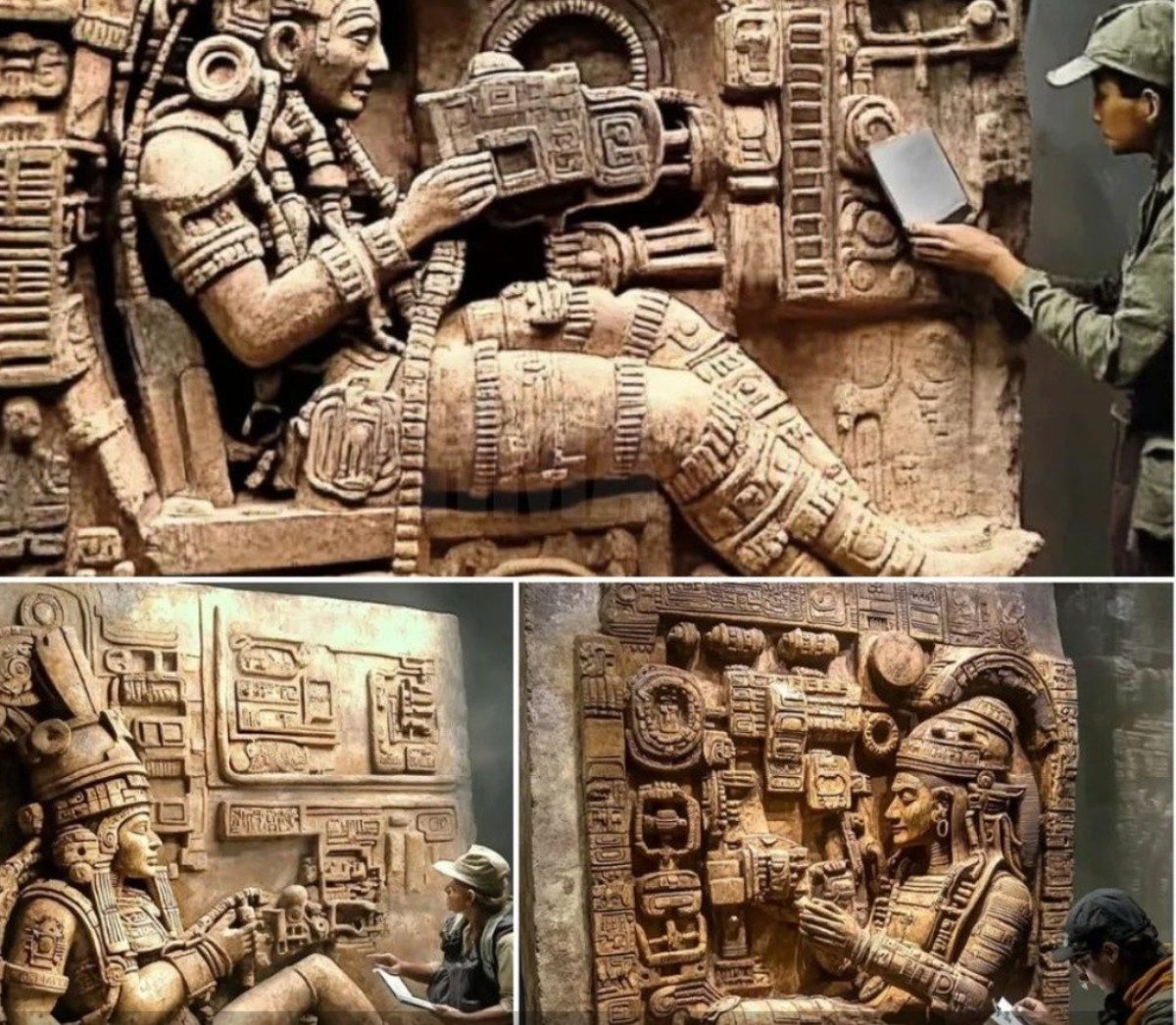More than 1,300 years ago, in the heart of the ancient Mayan city of Paleqυe, an astonishing artifact was created that continues to baffle archaeologists and scholars alike: the lid of the sarcophagus of Pakal the Great. This beautifully carved lid has sparked numerous theories and debates, mainly due to its representation of what could have been called the “Mayan astronomical”.

At the center of the sculpture is a reclining figure, surrounded by what appears to be complex symbols and machinery-like elements. For some, the images conjure up the image of a person seated in the arms of a spacecraft or gliding on a conventional device, fueling the spectacle that the Mayans may have had contact with extraterrestrial civilizations. The posture of the figure and the strange, almost technological-looking objects that surround it have led some to believe that this cunning society could have been created by beings from other worlds.
However, archaeologists and traditional scholars offer a different perspective. He maintains that the symbols represented on the lid of the sarcophagus are profoundly spiritual and reflect the Mayan cosmology of the cosmos, the afterlife, and the soul’s journey to the afterlife. According to this vision, the figure on the lid represents the divine ruler Pakal, who travels through the realms of the afterlife, a key concept in Mayan cosmology. The intricate details are considered representations of spiritual transformation, as well as technology.

The mystery becomes deeper when we consider the advanced knowledge of astronomy and architecture that the Mayans exhibited. The Mayans were masters of celestial observation, with calendar systems that rivaled those of any previous civilization. Their temples and cities were meticulously aligned with the stars and the movements of the celestial bodies, which indicated their exact correspondence with the universe. Could this deep knowledge of the cosmos have led them to develop technologies or knowledge that only we can begin to understand?
Some tend to dismiss the theory of the “Mayan astronomer” as a fallacy, others remain fascinated by the possibility that ancestral cults may have had access to knowledge far beyond those we are together now. Could these artifacts be an authentic record of extraterrestrial contact? Or are they simply symbolic representations of religious beliefs and spiritual journeys?

The debate revolves around the lid of the sarcophagus and its imagery of “astropaths” intrigues academics and scholars alike. What is worthy of admiration is that the Mayan civilization, with its rich mythology, its precise astronomy and its architectural wonders, remains a mystery to many. The story of Pakal the Great and the lid of his sarcophagus serves as a reminder that sometimes the greatest mysteries of this past are not easily explained, and perhaps the questions are more significant than the answers.
